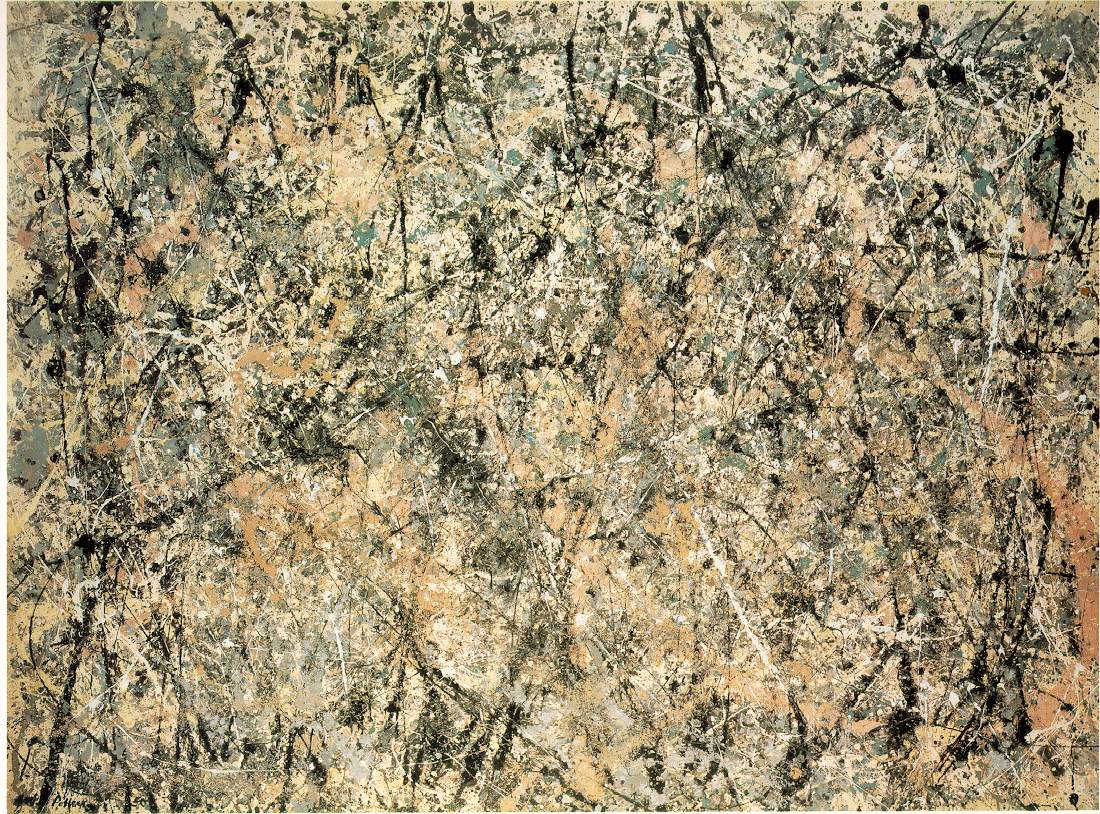 |
Jackson
Pollock, She Wolf, 1943
|
I believe that having an understanding of an artist life
and artistic challenges aids in the formal analysis of an artist work. In the
early “1940s, Native American motifs and other pictographic imagery played a
central role in Pollock’s compositions, marking the beginnings of his mature
style” (Harrison, 2011, p. 1). In “1941
Pollock moved in with fellow abstract expressionist Lee Krasner who he later
married in 1945” (Shaffer, 2012, p. 1), who “managed and promoted Pollock’s
work” (Shaffer, 2012, p. 1).
Though his art work was “gaining in
assurance and originality, Pollock was experiencing personal turmoil and
recurring bouts of depression” (Harrison,
2011, p. 1), as well as “struggling to control his alcoholism” (Harrison, 2011, p. 1). Pollock unsuccessful attempt to curb his
drinking and relieve his depression introduced him to “Jungian concepts that
validated the subjective, symbolic direction his art was taking” (Harrison, 2011, p. 1).
In appearance Pollock’s, She Wolf (1943) reflects
a “congestion of somber colors generating a conflicted anxious mood” (Harrison, 2011, p. 1) perhaps a
reflection of his life. “Color usage in
art depicts and generates feelings’ (Fichner-Rathus, 2013, p. 52). In Pollock’s, She Wolf, 1943 we see an array of color usage consisting of black,
grey, white with hints of red, yellow, orange and green. The somber colors maybe
a reflection his depression, the hint of orange the lack of confidence perhaps brought
about by his depression. In the top
left corners we see a splash of green possibly reflected of his inability to focus
contributed by inability to control his drinking.
If we look closely to the left of the portrait
there appears to be figure representative of individual, whose head is
accentuated by a red encirclement. An
implied motion via an implied red line resembling an arrow directs the spectators
attention to the head of what appears to be the wolf. In the individuals hand is a yellow object of
some sort representative of innovation. Perhaps Pollock is making note that he is angry
that the innovation behind his work is due to his lover, Krasner and not his
own merit.
.png) |
Lee
Krasner, Sun Woman II (1957)
|
Krasner created Sun Women II in 1957 a year after moving
to “Europe to re-evaluate her relationship with Pollock” (Harrison,
2011, p. 1). Pollock was unable to master his “personal
demons and had stop painting all together in 1955” (Harrison, 2011, p. 1). Though Pollock had stopped paining, “ironically,
his work had begun to earn a respectable income” (Harrison, 2011, p. 1g).
Krasner devoted a lot of time ‘promoting
and managing the practical’s of Pollock's career” (Shaffer, 2012, p. 1), but she
“never stopped stop making her own artwork” (Shaffer, 2012, p. 1). In her own words “she struggled to "lose
Cubism" and "absorb Pollock"(Shaffer, 2012, p. 1), and “underwent a profound reappraisal of her
artistic direction” (Shaffer, 2012,
p. 1). Krasner did go on to be “positively
received by a leading well-known critic, Clement Greenberg, who declared it one
of the most important shows of the decade” (Shaffer, 2012, p. 1), but could
this piece represent the feelings of anger and jealousy she holds toward
Pollock and his work? After all, this
piece was created a year after Pollock’s work started to earn monetary
value.
The colors used in Krasner’s Sun Woman II (1957) include green,
red and beigh. Space is indicated by the
color white. Looking at the piece it
seems to be split in three collages. On
the left side if we look closely we can depict a side profile of a face with a
green eye, possibly representative of the green eye of envy, this figure is
encircled by the “ color red, which in art represents anger” (Fichner-Rathus, 2013, p. 57),
perhaps this is a reflection of her earlier years with Pollock. Slightly to the right of the middle section we
can see a figure of an individual represented in a solid green and just below
we see a face figure with green eyes and a green mouth, which seems to be cut
off by two red abstract circles, possibly indicative of envy being replaced
with anger. In this piece we see space
represented by white, possibly indicative of the time reflected between the
sentiments.
 |
| Pollock in midst of creating. Krasner observing in chair. |
 |
|
Jackson
Pollock, Lavender Mist (no. 1) 1950
|
The positive to the Pollock/Krasner comparison power point is that
each artist abstract style is represented.
Pollock’s use of liquid paint as a primary medium is displayed in both Lavender
mist 1950 and Full Fathom Five, 1947. The
pieces highlight Pollock’s “world renowned, signature use of “densely layered liquid
paint medium” (Harrison, 2011, p. 3). This “spontaneous pouring technique rendered
Pollock recognition in a 1949 issue of Life magazine” (Harrison, 2011, p. 3)
To learn more about the artist Jackson Pollock and view some of his work please click here http://sb.cc.stonybrook.edu/pkhouse/story/pollock1.shtml
 |
| Krasner, Right Bird Left (1965) |
Krasner’s Right Bird Left (`1965) and Sun Woman II (1957) are
significant representation of Matisse influence. Krasner’s
“paintings emphasize a calligraphic quality by the use of sharped edges to resemble
a collage” (Harrison, 2011, p. 3). This signature style and exposure to
commercial galleries helped her “emerged from her sometimes stifling role as
Mrs. Jackson Pollock and achieved recognition for her own contributions to
modern American art” (Harrison,
2011, p. 3)
To learn more about Lee Krasner and view more of her work please click here http://sb.cc.stonybrook.edu/pkhouse/story/krasner1.shtml
References
No comments:
Post a Comment